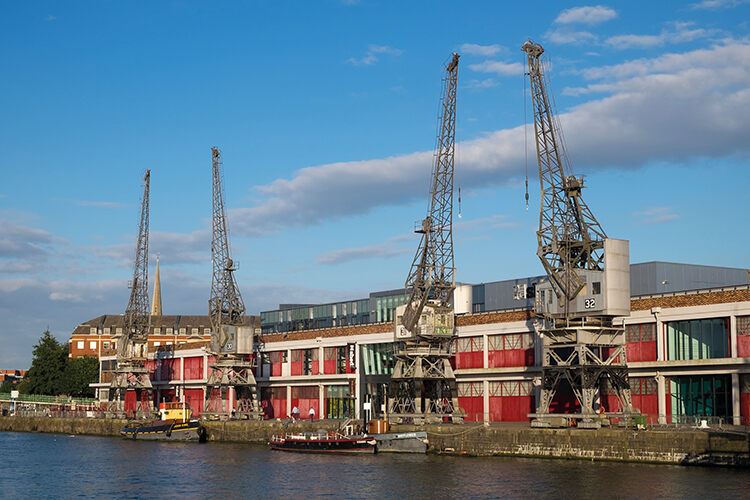
Rory Walsh visits a historic harbour and discovers the source of the term ‘ship shape and Bristol fashion’
Discovering Britain
View • Urban • South West England • Web Guide
Plain sailing. Loose cannon. All hands on deck. Down in the doldrums. The English language brims with nautically inspired phrases. Given Britain is an island, immeasurably shaped by the sea, this isn’t surprising. The expansion of the British Empire through seafaring exploits spread many of these phrases internationally. One, however, remains decidedly local. The idiom ‘shipshape and Bristol fashion’ is rarely heard overseas. Yet it highlights the unique geography of one of Britain’s most significant ports.
The phrase’s origins emerge from the depths of Bristol Harbour. Outside the M Shed dockside museum stand four huge cranes. This quartet of metal giraffes are symbols of Bristol’s maritime heritage. The cranes handled cargo that arrived in Bristol by ship from around the world, particularly the Americas. The city became a major port despite being 24 kilometres from the sea. Its location on the River Avon provided navigable access to the Atlantic. There’s evidence of Bristol ships visiting Iceland in the 13th century. By the 17th century, Bristol was central to the brutal transatlantic slave trade.
Most dictionaries agree that ‘shipshape’ refers to maintaining a ship ‘in good order’. Living quarters were kept tidy to maximise space and minimise accidents. Cargo was securely stowed to avoid damage on rough seas.
For centuries, ships entering Bristol risked a turbulent journey. A clue as to why can be found in the harbour’s alternative name. It’s known as the Floating Harbour because the water level remains constant, regardless of the tide. This wasn’t always the case. The Bristol Channel has the world’s second-largest tidal range. The sea level can drop by 13 metres twice a day. The Avon’s twisting course, which includes the steep Avon Gorge, funnels water inland, but at low tide, ships became beached in swathes of mud. If their contents weren’t ‘shipshape’, the ships could literally keel over. Furthermore, Bristol’s tidal variation placed great stresses on wooden ships. Vessels travelling to the harbour were therefore prepared ‘Bristol fashion’ – very neatly and carefully.
To protect ships and draw trade away from Liverpool, the Floating Harbour was completed in 1809. Its series of locks and weirs still maintain the water level. The Harbourside area has since become a leisure location. Paddle boards and kayaks skim the surface. Quayside warehouses are now shops, bars and cultural attractions. The term ‘shipshape and Bristol fashion’ reflects how the city was kept afloat, not left high and dry.




